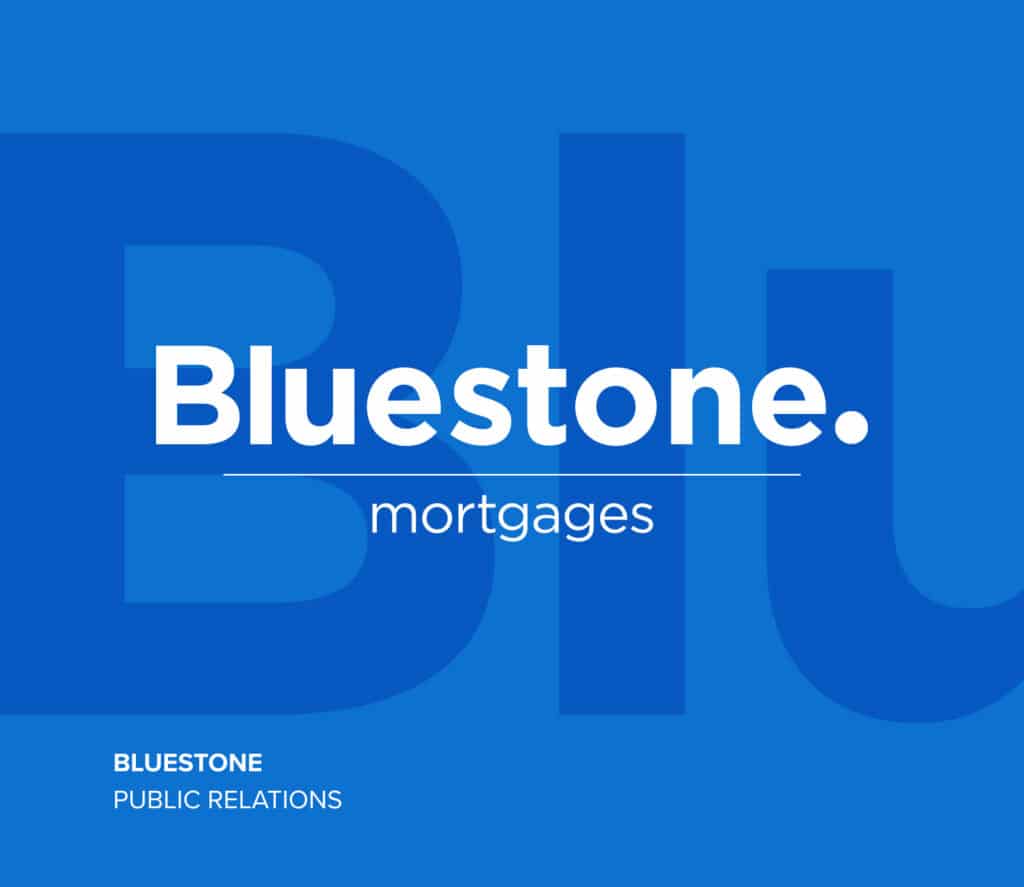How to Build an Investor Relations Strategy
Investors play a critical role beyond the provision of capital that can fuel corporate growth. They can also provide a repository of industry experience, networking opportunities, and decision-making power that can help determine a company’s direction and overall impact within the market.
Maintaining and nurturing relationships with investors is just as important for organizations as the effort put into acquiring those investors in the first place. To this end, organizations with investors should prioritize communication and engagement with these pivotal stakeholders across all stages of their influence. A subset of public relations, investor relations, or IR, can ensure proper attention, information sharing, and compliance are managed effectively across both potential and current investors.
An investor relations strategy can encompass a wide range of communications techniques such as targeting and outreach to prospective and newly acquired investors as well as establishing and disseminating a corporate narrative that instills brand value, recognition, and trust across audiences. Sixty-one percent of corporate investor relations officers plan to dedicate time to developing their company story, and 53% are looking at building investor relationships to strengthen existing ties.
More than just a communications strategy to raise capital, investor relations is increasingly becoming a field of its own. Of those already in an investor relations role, 87% are very or somewhat optimistic about growth and opportunity in the field as more companies prioritize stakeholder engagement. This may be due, in part, to expectations around personalization, transparency, and compliance driving investment decision making.
For organizations pursuing or fostering a roster of investors, implementing an IR strategy is an essential step. When approached comprehensively, crafting an investor relations strategy is comprised of a candid assessment of existing processes and clear delineation of goals for future outcomes that can directly impact a company’s bottom line.
Understanding the Role of Investor Relations in Today’s World
Building investor relationships may be more important now than ever as investors frame their decision making around global economic and political uncertainty. While capital raised in 2024 for private equity funds increased in comparison to 2023, holding periods are longer, competition is tighter, and risk tolerance is lower.
An IR strategy can help a company accurately represent their value in light of investor priorities and market concerns. With transparency and trust as key expectations for today’s investors, companies can deploy an investor relations strategy to underscore their competency and integrity.
While confidence is a prevailing requirement for investors, other priorities often go unaddressed by organizations. With 24% of executives lacking clarity around stakeholder demands, effective investor engagement techniques can also help the companies receiving (or looking to raise) capital better understand and cater to investor interests. Traditionally, corporate investor relations has been viewed as a finance-forward role with many IR executives holding dual roles as chief financial officers or similar titles. In the current landscape, investor relations management is much broader including marketing, communications, and regulatory compliance. This includes environmental, social, and governance (ESG) considerations that are increasingly influencing investor decision making.
In addition to positioning an organization from a branding perspective, corporations with investors also owe due diligence. Companies should look to proactively communicate risks, outcomes, alignment, and compliance to their stakeholders. This can include comprehensive investor relations communication tools and strategies that provide updates and insights, again underscoring trust that can aid acquisition, retention, and long-term funding.
Effectively communicating with investors can have a direct impact on an organization’s ability to raise capital. Reputation management and corporate credibility lead the way in an IR plan that can help garner trust and commitment from potential investors. However, developing an investor communication plan should also include conducting engagement outreach, responding to investor concerns, and generating content that articulates a unique investment thesis. Guiding investors as they explore a company’s value proposition while managing clear expectations and addressing risk can create a positive impression on those investors and make an investment more attractive.
Perhaps most challenging for investor relations today is to develop assets that cut through the noise in a saturated digital-first marketplace. For example, major venture capital firms look at roughly 12 pitches each day and fund just 20 startups each year (approximately 0.7% of yearly inbound leads). With an average of 120 emails landing in a typical executive’s inbox daily, an IR strategy needs to be innovative, attention grabbing, and concise to stand out or look for ways to connect outside of email.
Steps to Build an Investor Relations Strategy
Doing all of this requires the creation of a strong investor relations strategy that explores how to communicate effectively with investors while adhering to corporate branding goals. While the individual components will vary, the general approach to building an IR strategy follows a typical framework.
Assess Your Current Investor Relations Efforts
Between marketing and public relations, even companies without an intentional investor relations strategy are likely already communicating with their investors through one or more channels. IR professionals should assess any existing efforts and determine if or how effective those methods are currently. Traditional communications such as press releases and email updates may serve as the groundwork for a more comprehensive, multichannel approach.
Investor relations is also a nuanced field requiring a deeper understanding of individual investors’ interests and expectations. This can necessitate assessing whether the organization has been effectively attracting investors that fit non-capital needs such as mentorship, guidance, credibility, corporate culture fit, and overall level of involvement. A better understanding of each target can also lead to different outcomes with regard to outreach methods, messaging frequency, and topics.
Conducting a formal stakeholder analysis can shed light on each investor’s needs and help define investor relations best practices for a specific organization. More than listing the names of current investors and shareholders, a stakeholder analysis groups individuals and firms based on common interests, expectations, and communication methods. While a press release may be a fitting format to use when engaging with analysts, personalized outreach regarding financial performance and how it relates to investor expectations could be a better approach for individual shareholders. By identifying target segments, similar to traditional marketing strategies, IR professionals can be more suitably engage with key stakeholders.
Another assessment tool when getting started with corporate investor relations is to administer a shareholder or investor survey. These can provide insights into a wide range of investor behaviors including preferred communication methods, critical investment criteria, risk tolerance, and the information they are most interested in receiving. Again, targeted contacts can be segmented using this information so outreach can be more personalized and more likely to engage the recipient in the future. Online survey platforms such as SurveyMonkey and Typeform can simplify the distribution and tabulation of these surveys while maintaining end-user confidentiality and data security.
Define Clear Goals for Your IR Strategy
The next step for creating an investor relations strategy is to set goals that are clearly definable and measurable. Communicating broadly with potential and current investors is just the start of investor relations. Tracking the success of these campaigns and associating any capital raised to those efforts can help demonstrate IR value while also helping IR leaders focus resources on the strategies that work best.
One prevalent approach to establishing goals is to use the SMART method. SMART goals are those that are Specific, Measurable, Achievable, Relevant, and Time-bound. Notably, they should also align with the broader objectives set for the organization. Examples of common key performance indicators (KPIs) or SMART goals for success in investor relations can include:
- Meeting or call quotas with prospective investors
- Shareholder growth or holding periods
- Analyst rating or target price achievement
- Digital campaign opens and clicks by demographic
- Increased investor engagement per event/activity
- Website asset downloads with lead information
Craft a Comprehensive IR Plan
With clearly defined goals and an understanding of current engagement, IR leaders can put together an action-oriented IR strategy. Building out a flexible communication calendar can help ensure recurring activities, major milestones, and regular cadence outreach are planned in advance. Include intentional content around activities such as earnings reports and investor updates with room to expand as needed in response to one-off industry and corporate happenings.
While some methods and formats, such as creating concise and engaging narratives that capture attention, will likely be effective across an array of investors, IR leaders should apply their knowledge of different investor priorities to vary their communication efforts. Segmenting communications strategies can help make efforts more impactful. For instance, retail investors that typically trade in smaller amounts with greater frequency may have different interests and engagement needs than their institutional investor counterparts.
Designing a multichannel approach should also align with different investor segments. Taking the time to conduct live webinars or in-person meetings can be an effective way to engage with institutional investors, creating connections and further building investor trust and confidence. More creative channels like social media and video can help improve visibility, bolster online impressions and engagement, and motivate investors to interact with a brand more regularly. Newsletters, email updates, case studies, and press releases provide an opportunity for more traditional outreach and engagement not only with investors but also media and analysts.
All of these methods should leverage consistent, compelling storytelling emphasizing the company’s investment thesis, vision, growth, and core initiatives. This can include everything from reiterating financial stability to underscoring ESG initiatives. Above all, investors are looking for consistency and confidence building in the messaging that comes from corporate investor relations.
Even the best laid plans can experience disruption, and a successful investor relations strategy should also account for how to communicate challenges or address negative press. Rather than being reactive to issues such as economic turmoil or suboptimal financial reporting, IR leaders should have a plan in place for how to proactively manage corporate perceptions during difficult times.
Leverage Technology for Investor Engagement
Technology can provide a major advantage when managing a multichannel investor relations strategy. Going beyond common digital marketing methods including email and SMS, the digital marketing tools available to enhance investor relations are plentiful.
Leveraging virtual meeting platforms for shareholder meetings can reduce barriers to access and involvement. Many of these include tools for live polling, question and answer curation, and attendee authentication. Examples of these platforms include Aventri, OnBoard, and Resolve Virtual AGM.
Customer relationship management (CRM) systems are also a key component of organizing and conducting investor relations. More than just a contact management tool, CRMs can track engagement by logging touchpoints, tracking deal flow, maintaining profiles, and ensuring compliance. Some of these systems, such as Salesforce or Irwin, also support sending bulk emails with the ability to personalize content and monitor engagement.
Generative AI (GenAI) is continuing to disrupt how organizations analyze data and engage with customers, partners, and prospects, and investor relations is no different. GenAI can help further analyze the data pulled into a CRM or collected from stakeholder analysis surveys to profile investors, conduct sentiment analysis, and optimize content for different audiences. This technology also offers opportunities for automating tasks including company website updates with critical data that can further transparency and trust.
While personalized communication may prevail in investor relations, social media still offers benefits as part of a comprehensive IR strategy. Publishing timely updates across platforms can demonstrate proactive investor and community outreach and allow for real-time engagement. These channels can also help companies boost brand awareness with new investors and provide another avenue to monitor sentiment and address any issues before they become problematic.
Implement and Monitor Your IR Strategy
The KPIs established at the beginning of investor relations planning should be monitored throughout the course of any implemented campaigns. Watching trends and movements in metrics such as investor sentiment or shareholder retention rates can alert IR strategists to potential issues or content to capitalize on. Reporting tools such as dedicated IR CRM platforms can be pivotal in tracking these objectives against real-time data to determine whether or not efforts are producing the desired results.
Conducing quarterly reviews can help teams remain current on campaign performance and investor engagement metrics. Comprehensive IR plans should be designed for agility with the ability to shift messaging or tactics to optimize engagement based on actual results. Iterative improvements can help fine tune outreach plans for each target segmentation to increase response rates or improve KPIs that may be lagging.
Key Trends in Investor Relations for the Future
The components of investor relations may be tried and true, but the content featured in these campaigns remains dynamic. Traditional strategies have focused on investor relations and financial reporting, annual statements, and overall performance. These continue to be important elements in investor relations communications, but they are no longer the sole messaging investors expect.
ESG reporting is rising in importance among investors. While 98% of S&P 500 companies report ESG data, few brands are using ESG messaging as part of their investment thesis or value stories. However, 85% of chief investment officers hold ESG as an important factor when making investment decisions.
Regulatory demands are also a point of concern for investors as compliance requirements continue to shift. Organizations should communicate that they have disclosed material information while following the regulations set for by the Securities and Exchange Commission (SEC). Corporate governance and investor relations can focus on regular, timely disclosure of information while also complying with any required quiet periods in communications that could have a bearing on market outcomes.
Younger investors are driving new trends and creating a need for changes in IR communication strategies. These investors have firm expectations around areas such as technology integration and use, services personalization, and social justice values. Companies can use their IR communications plans to highlight these strengths in their value narratives and make sure this increasingly vital investor demographic is informed beyond financial reports.
Transparency will remain a critical component of a viable investor relations strategy not only for attracting younger investors but for retaining trust and credibility with more traditional or existing investors as well. Companies should proactively share data and outcomes regarding their financial performance and risk potential so investors can feel confident that they can make informed decisions about their capital. This may also help attract new, younger investors while boosting market valuation and potentially affecting stock values.
Technology may hold the answer for IR strategies looking to stay ahead of these trends. In addition to using platforms for investor communication, technologies such as GenAI can propel decision making around engagement metrics and market penetration. Blockchain may also help with engagement and transparency with tools that can track share ownership and collect shareholder votes with reduced errors and heightened security.
Common Challenges in Investor Relations (and How to Overcome Them)
While some obstacles like market volatility are beyond control, companies can overcome many of the challenges put forth by today’s investors. Appointing a dedicated investor relations officer and team can ensure resources are concentrated on staying ahead of shifting market perceptions. These professionals can also monitor and manage investor expectations through personalized communication rather than leaving the messaging up to broader corporate marketing efforts.
Other common challenges a corporate investor relations team can help manage include:
- Ensuring timely disclosures of essential information for compliance
- Remaining current with changing regulatory standards
- Monitoring competitive intelligence to mitigate risk
- Responding quickly and effectively during crisis management
- Engaging stakeholders with diverse interests and expectations
- Maintaining analyst coverage and engagement
Final Thoughts on Building an IR Strategy
Building trust is not a one-time occurrence with investors; it’s an ongoing process requiring consistent, clear communication geared toward each investor’s interests. Establishing a dedicated investor relations strategy can help with building investor relationships that can directly affect access to capital for an organization.
At Vested, we understand the complexities of investor relations and the diverse communication methods, channels, and messaging needed to be impactful. Our experts help IR professionals maximize their brand value and tell compelling stories that can engage, attract, and retain critical investors. Learn more about how Vested can amplify your corporate investor relations strategy.


